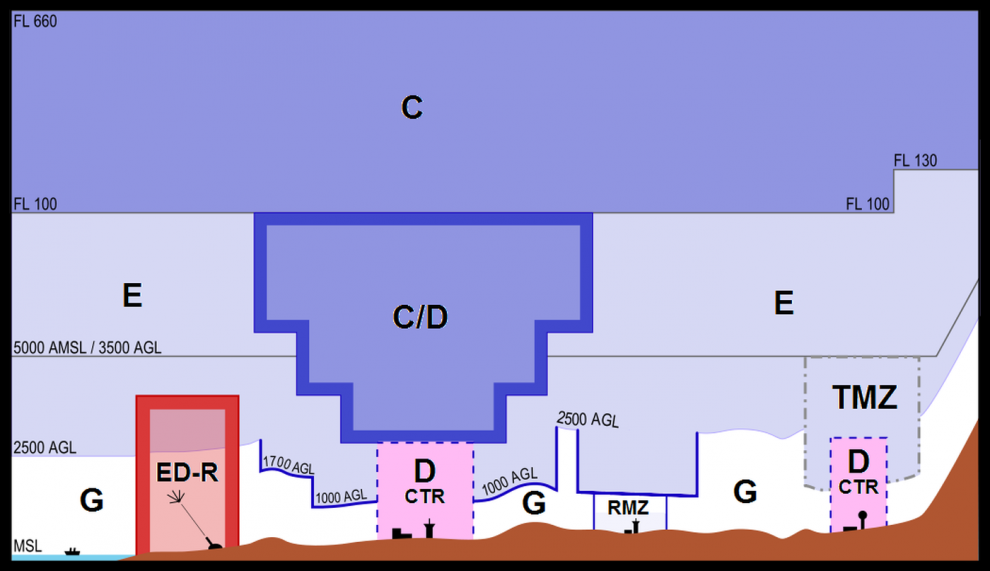boscomantico wrote:
In fact, we will soon have that (with exceptions). If I understood correctly, the Rules of the Air will soon say that any installed transponder must be on at all times. There’s your Europe-wide TMZ, with a few ultralights/oldtimers and (lots of) gliders without transponders excepte
As you know in the US that rule already applies, but it doesn’t mean anything in relation to a nation wide TMZ for your average Cessna or whatever. You don’t have to have a transponder installed. If somebody wants to remove their transponder in a few seconds (maybe for service) and keep flying, no problem as long as they don’t fly in a Class B related TMZ or equivalent. Of course, in reality most planes do have them installed and if they do, they’re on. In that way, with as few mandates as possible as a primary objective of the regulation, safety is enhanced and airspace access and flexibility is maximized for all aircraft.
boscomantico wrote:
The only countries in Europe which have a country-wide class E coverage are Germany, Austria and Swizerland. All other countries are essentially all class G outside of CTRs/CTAs/TMAs.
Czech Republic also has class E nationwide from 1000 ft AGL to FL95.
Right. Forgot that.
TMZ throughout Germany except airspace G, as suggested by what_next, sounds sensible and simple I think.
Ultranomad wrote:
Czech Republic also has class E nationwide from 1000 ft AGL to FL95.
If I remember correctly it is the same in Croatia.
While Class E is indeed CAS for IFR, it isn’t CAS (for practical purposes) for VFR and anybody can be in there, anywhere, non-transponder, usually even non-radio…
So the key Q in this debate is whether airline traffic is routinely found in the Class E airspace in question and in the countries where there is any significant VFR traffic in the Class E.
I bet you it isn’t. 
We have ATCOs here from Germany and France 
Czech Republic also has class E nationwide from 1000 ft AGL to FL95.
If I remember correctly it is the same in Croatia.
Nope. It’s class D all over. That being the reason why an enroute clearance is required even for most VFR flights.
MedEwok wrote:
Forgive me for playing the devils advocate here, but why don’t we make the whole country a TMZ?
Interesting way to promote GA, by suggesting increasing restrictions on airspace use. This would indeed eliminate all nordo operation in Germany and keep out all non-German GA traffic without a transponder.
I would think it better to push for voluntary use of an approved solution that is so cheap no one could argue against it rather than adding national stop-gap procedures that increase the complexity for GA pilots flying around Europe. I’m thinking here about all the new electronics coming along for drones, such as the PingBuddy with a one-time entry price of $150. All that is still missing for it is a full ADS-B in/out that is battery operated and sticks on the window like the PingBuddy-2. We are not far from that now.
As Sylvaire has pointed out, this is a fundamental difference between the US approach and Europe where many countries structure their airspace to apply as much direct control as possible. It’s historical, going back to the first English who crossed the Atlantic 
Peter wrote:
So the key Q in this debate is whether airline traffic is routinely found in the Class E airspace in question and in the countries where there is any significant VFR traffic in the Class E.
Well, I am no ATCO but I can assure you that in Germany this is the case. The airspace typically looks like this (that’s just a sample illustration from the internet – not to scale – in reality airspace E makes up for almost 80% of the air volume below FL100):

There are maybe 6 or 7 international airports whose control zone (class D) is connected to the controlled airspace C above FL100 by a funnel-like structure of airspace C and/or D (center of the illustration). All the other airports – among them those in the list of the thread starter, are sort of a class D island inside a sea of class E. Every single instrument approach and departure including holdings takes place within class E where – unless there is an RMZ as depicted on the right side of the illustration – non-radio non-transponder aircraft can do what they like, unseen and unheard.
This

is obviously the perceived problem… if non-txp non-radio traffic is allowed above the TMZ, or inside the TMZ before it becomes a TMZ. But I guess the sky is big 